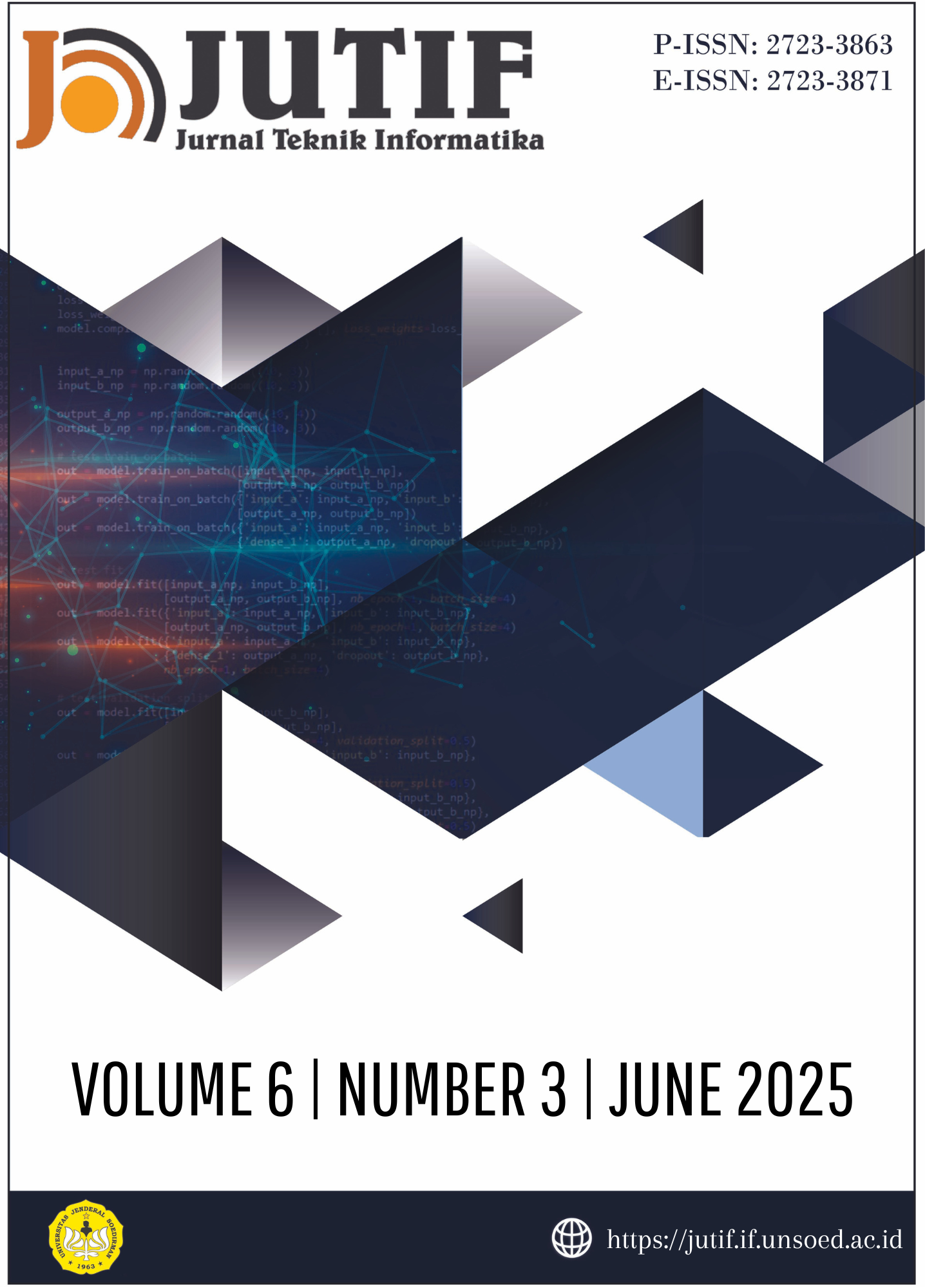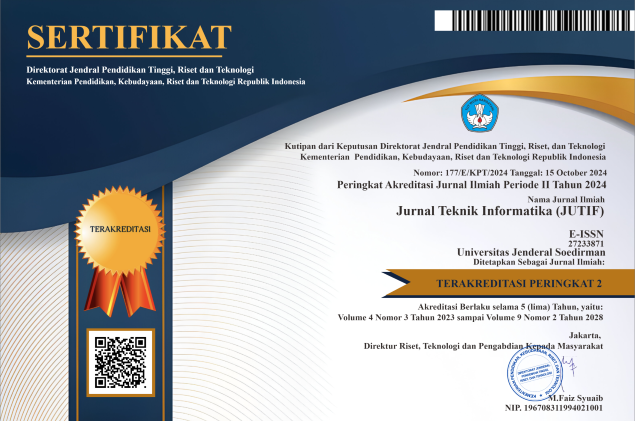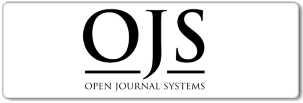Improving Term Deposit Customer Prediction Using Support Vector Machine with SMOTE and Hyperparameter Tuning in Bank Marketing Campaigns
DOI:
https://doi.org/10.52436/1.jutif.2025.6.3.4585Keywords:
Support Vector Machine; SMOTE; bank marketing; hyperparameter optimization; predictive modeling.Abstract
Identifying potential customers for term deposit products remains a challenge in the banking industry due to class imbalance in marketing datasets. This study proposes an integrated approach that combines Support Vector Machine (SVM) with the Synthetic Minority Oversampling Technique (SMOTE) and hyperparameter tuning via GridSearchCV to enhance prediction performance. The dataset comprises 45,211 records containing demographic and campaign-related features. Preprocessing steps include categorical encoding, feature scaling, and SMOTE-based resampling. The optimized SVM model achieves an accuracy of 91% and an AUC of 0.96, outperforming the baseline model and demonstrating strong discriminatory ability, particularly for the minority class. This method improves the balance between precision and recall while reducing bias toward the majority class. The findings confirm the effectiveness of combining SMOTE and SVM for imbalanced classification tasks in the financial domain. These results contribute to the advancement of applied machine learning in informatics, particularly in developing robust decision support systems for data-driven banking strategies. Future work may extend this approach to diverse datasets and explore advanced resampling or ensemble techniques to improve model generalization.
Downloads
References
M. Leo, S. Sharma, and K. Maddulety, “Machine Learning in Banking Risk Management: A Literature Review,” Risks, vol. 7, no. 1, p. 29, Mar. 2019, doi: 10.3390/risks7010029.
P. P. Singh, F. I. Anik, R. Senapati, A. Sinha, N. Sakib, and E. Hossain, “Investigating customer churn in banking: a machine learning approach and visualization app for data science and management,” Data Sci. Manag., vol. 7, no. 1, pp. 7–16, Mar. 2024, doi: 10.1016/j.dsm.2023.09.002.
A. Manzoor, M. Atif Qureshi, E. Kidney, and L. Longo, “A Review on Machine Learning Methods for Customer Churn Prediction and Recommendations for Business Practitioners,” IEEE Access, vol. 12, pp. 70434–70463, 2024, doi: 10.1109/ACCESS.2024.3402092.
A. Petropoulos, V. Siakoulis, E. Stavroulakis, and N. E. Vlachogiannakis, “Predicting bank insolvencies using machine learning techniques,” Int. J. Forecast., vol. 36, no. 3, pp. 1092–1113, Jul. 2020, doi: 10.1016/j.ijforecast.2019.11.005.
M. J. A. Patwary, S. Akter, M. S. Bin Alam, and A. N. M. Rezaul Karim, “Bank Deposit Prediction Using Ensemble Learning,” Artif. Intell. Evol., pp. 42–51, Aug. 2021, doi: 10.37256/aie.222021880.
S. M. N. Nobel et al., “Unmasking Banking Fraud: Unleashing the Power of Machine Learning and Explainable AI (XAI) on Imbalanced Data,” Information, vol. 15, no. 6, p. 298, May 2024, doi: 10.3390/info15060298.
J. M. Johnson and T. M. Khoshgoftaar, “Survey on deep learning with class imbalance,” J. Big Data, vol. 6, no. 1, p. 27, Dec. 2019, doi: 10.1186/s40537-019-0192-5.
P. Appiahene, Y. M. Missah, and U. Najim, “Predicting Bank Operational Efficiency Using Machine Learning Algorithm: Comparative Study of Decision Tree, Random Forest, and Neural Networks,” Adv. Fuzzy Syst., vol. 2020, pp. 1–12, Jul. 2020, doi: 10.1155/2020/8581202.
P. Guerra and M. Castelli, “Machine Learning Applied to Banking Supervision a Literature Review,” Risks, vol. 9, no. 7, p. 136, Jul. 2021, doi: 10.3390/risks9070136.
J. Cervantes, F. Garcia-Lamont, L. Rodríguez-Mazahua, and A. Lopez, “A comprehensive survey on support vector machine classification: Applications, challenges and trends,” Neurocomputing, vol. 408, pp. 189–215, Sep. 2020, doi: 10.1016/j.neucom.2019.10.118.
D. Elreedy, A. F. Atiya, and F. Kamalov, “A theoretical distribution analysis of synthetic minority oversampling technique (SMOTE) for imbalanced learning,” Mach. Learn., vol. 113, no. 7, pp. 4903–4923, Jul. 2024, doi: 10.1007/s10994-022-06296-4.
A. Sakho, E. Malherbe, C.-E. Gauthier, and E. Scornet, “Harnessing Mixed Features for Imbalance Data Oversampling: Application to Bank Customers Scoring,” Mar. 26, 2025, arXiv: arXiv:2503.22730. doi: 10.48550/arXiv.2503.22730.
S. Moro, P. Cortez, and P. Rita, “A data-driven approach to predict the success of bank telemarketing,” Decis. Support Syst., vol. 62, pp. 22–31, Jun. 2014, doi: 10.1016/j.dss.2014.03.001.
Y. Choi and J. Choi, “How does Machine Learning Predict the Success of Bank Telemarketing?,” May 31, 2022, In Review. doi: 10.21203/rs.3.rs-1695659/v1.
M. Peter, H. Mofi, S. Likoko, J. Sabas, R. Mbura, and N. Mduma, “Predicting customer subscription in bank telemarketing campaigns using ensemble learning models,” Mach. Learn. Appl., vol. 19, p. 100618, Mar. 2025, doi: 10.1016/j.mlwa.2025.100618.
S. C. K. Tékouabou, Ş. C. Gherghina, H. Toulni, P. Neves Mata, M. N. Mata, and J. M. Martins, “A Machine Learning Framework towards Bank Telemarketing Prediction,” J. Risk Financ. Manag., vol. 15, no. 6, p. 269, Jun. 2022, doi: 10.3390/jrfm15060269.
A. Amato and V. Di Lecce, “Data preprocessing impact on machine learning algorithm performance,” Open Comput. Sci., vol. 13, no. 1, p. 20220278, Jul. 2023, doi: 10.1515/comp-2022-0278.
D. Z. Abidin, S. Nurmaini, R. Firsandava Malik, Erwin, E. Rasywir, and Y. Pratama, “RSSI Data Preparation for Machine Learning,” in 2020 International Conference on Informatics, Multimedia, Cyber and Information System (ICIMCIS), Jakarta, Indonesia: IEEE, Nov. 2020, pp. 284–289. doi: 10.1109/ICIMCIS51567.2020.9354273.
D. Elreedy and A. F. Atiya, “A Comprehensive Analysis of Synthetic Minority Oversampling Technique (SMOTE) for handling class imbalance,” Inf. Sci., vol. 505, pp. 32–64, Dec. 2019, doi: 10.1016/j.ins.2019.07.070.
Asniar, N. U. Maulidevi, and K. Surendro, “SMOTE-LOF for noise identification in imbalanced data classification,” J. King Saud Univ. - Comput. Inf. Sci., vol. 34, no. 6, pp. 3413–3423, Jun. 2022, doi: 10.1016/j.jksuci.2021.01.014.
V. R. Joseph, “Optimal ratio for data splitting,” Stat. Anal. Data Min. ASA Data Sci. J., vol. 15, no. 4, pp. 531–538, Aug. 2022, doi: 10.1002/sam.11583.
V. Djurisic, L. Kascelan, S. Rogic, and B. Melovic, “Bank CRM Optimization Using Predictive Classification Based on the Support Vector Machine Method,” Appl. Artif. Intell., vol. 34, no. 12, pp. 941–955, Oct. 2020, doi: 10.1080/08839514.2020.1790248.
X. Tang and Y. Zhu, “Enhancing bank marketing strategies with ensemble learning: Empirical analysis,” PLOS ONE, vol. 19, no. 1, p. e0294759, Jan. 2024, doi: 10.1371/journal.pone.0294759.
Y. Ali, E. Awwad, M. Al-Razgan, and A. Maarouf, “Hyperparameter Search for Machine Learning Algorithms for Optimizing the Computational Complexity,” Processes, vol. 11, no. 2, p. 349, Jan. 2023, doi: 10.3390/pr11020349.
J. Allgaier and R. Pryss, “Cross-Validation Visualized: A Narrative Guide to Advanced Methods,” Mach. Learn. Knowl. Extr., vol. 6, no. 2, pp. 1378–1388, Jun. 2024, doi: 10.3390/make6020065.
Department of Computer Science and Informatics, University of Energy and Natural Resources, Sunyani, Ghana, I. K. Nti, O. Nyarko-Boateng, and J. Aning, “Performance of Machine Learning Algorithms with Different K Values in K-fold CrossValidation,” Int. J. Inf. Technol. Comput. Sci., vol. 13, no. 6, pp. 61–71, Dec. 2021, doi: 10.5815/ijitcs.2021.06.05.
U. H. Laksono and R. R. Suryono, “Sentiment Analysis Of Online Dating Apps Using Support Vector Machine And Naïve Bayes Algorithms,” J. Tek. Inform. Jutif, vol. 6, no. 1, pp. 229–238, Feb. 2025, doi: 10.52436/1.jutif.2025.6.1.2105.
I. Markoulidakis and G. Markoulidakis, “Probabilistic Confusion Matrix: A Novel Method for Machine Learning Algorithm Generalized Performance Analysis,” Technologies, vol. 12, no. 7, p. 113, Jul. 2024, doi: 10.3390/technologies12070113.
J. Li, H. Sun, and J. Li, “Beyond confusion matrix: learning from multiple annotators with awareness of instance features,” Mach. Learn., vol. 112, no. 3, pp. 1053–1075, Mar. 2023, doi: 10.1007/s10994-022-06211-x.
A. M. Carrington et al., “A new concordant partial AUC and partial c statistic for imbalanced data in the evaluation of machine learning algorithms,” BMC Med. Inform. Decis. Mak., vol. 20, no. 1, p. 4, Dec. 2020, doi: 10.1186/s12911-019-1014-6.
R. Kannan and V. Vasanthi, “Machine Learning Algorithms with ROC Curve for Predicting and Diagnosing the Heart Disease,” in Soft Computing and Medical Bioinformatics, in SpringerBriefs in Applied Sciences and Technology. , Singapore: Springer Singapore, 2019, pp. 63–72. doi: 10.1007/978-981-13-0059-2_8.
Q. M. Zhou, L. Zhe, R. J. Brooke, M. M. Hudson, and Y. Yuan, “A relationship between the incremental values of area under the ROC curve and of area under the precision-recall curve,” Diagn. Progn. Res., vol. 5, no. 1, p. 13, Dec. 2021, doi: 10.1186/s41512-021-00102-w.
T. J. Firdaus, J. Indra, S. A. P. Lestari, and H. Hikmayanti, “Sentiment Analysis Of The Sambara Application Using The Support Vector Machine Algorithm,” J. Tek. Inform. Jutif, vol. 5, no. 4, pp. 1183–1192, Sep. 2024, doi: 10.52436/1.jutif.2024.5.4.2673.
I. Markoulidakis and G. Markoulidakis, “Probabilistic Confusion Matrix: A Novel Method for Machine Learning Algorithm Generalized Performance Analysis,” Technologies, vol. 12, no. 7, p. 113, Jul. 2024, doi: 10.3390/technologies12070113.
Additional Files
Published
How to Cite
Issue
Section
License
Copyright (c) 2025 Dodo Zaenal Abidin, Maria Rosario , Ali Sadikin , Nurhadi, Jasmir

This work is licensed under a Creative Commons Attribution 4.0 International License.



























